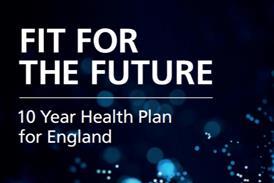Favouring younger, deprived communities with funding serves neither of the core principles of the NHS, writes Sheena Asthana.
Andrew Lansley’s announcement that areas with a high proportion of older people but little deprivation should no longer be “penalised” with respect to NHS funding has been met with predictable outrage.
Deprived urban and declining industrial areas have the highest mortality and morbidity rates – in standardised terms. But it does not necessarily follow that their need for healthcare is greatest. Measures such as standardised mortality rates intentionally design out the effects of age to reveal the effects of other factors on health, such as deprivation. This is an excellent way of highlighting areas that suffer from the worst health inequalities. However, standardised mortality rates are poorly equipped to identify areas that have the highest crude burdens of illness.
For most conditions (mental health excluded), age is a far more significant determinant of morbidity and mortality than deprivation. Because more affluent areas tend to have older demographic profiles, those with the highest standardised mortality rates tend to have the lowest crude rates of illness – and vice versa. In this respect, the health secretary is correct. The health communities grappling with some of the highest burdens of chronic illness and disability serve ageing, more affluent areas.
But is Mr Lansley correct in proposing such areas should receive the highest NHS allocations? It depends on whether you believe the goal of the NHS is to promote equal opportunity of access for equal needs (horizontal equity) or to promote an equal opportunity to be healthy (vertical equity).
Many health economists favour the latter. Yet health maximisation is inherently ageist. The “fair innings argument” proposes that younger patients are a higher priority, because older patients are considered to have received their entitlement of healthcare. This overlooks the fact that most people do not need or receive that much healthcare until they reach their seventies.
The more “ethical” objective of achieving health equity has also been used to justify shifting resources to deprived areas. However, it is important to ask what the NHS can realistically do to reduce the gap in outcomes.
The factors giving rise to inequalities are well known. Some lend themselves to preventive interventions, but most have less to do with delivery and distribution of healthcare than to policies resulting in socio-economic polarisation. Focusing on the role of the NHS draws attention away from these socio-structural determinants of health and is unlikely to promote greater health equity.
The health secretary has also been accused of trying to shift resources into Tory areas. This will inevitably be the case. However, flaws in previous NHS allocations mean Mr Lansley can justly claim to be attempting to redress gross inequity.
From 2002-09, there was a shift in resources towards deprived populations – mainly because health needs associated with age were effectively cancelled out by deprivation. This was acknowledged with the introduction of the combining age-related and additional needs formula.
If implemented – without adjustment – CARAN would have redistributed revenue income away from the most deprived PCTs. But it did not, because of an inequalities element set (by ministers) at 15 per cent of overall allocations.
Huge variations in funding remain. Dorset, the area with the highest percentage of the population aged 75-plus, has an all-cause standardised mortality rate of 84.5. In crude terms, its mortality rate is 1,159 per 100,000 people and 2.49 per cent of the population are on the cancer register. For each cancer patient, the PCT spent £4,075 last year. Its overall per capita NHS allocation is £1,560.50.
Only 3.4 per cent of Tower Hamlets’ population is over 75. Reflecting the area’s high level of deprivation, standardised mortality is 109.7. Yet crude mortality is only 441 per 100,000 and cancer registrations 0.77 per cent. Cancer spending per patient is £13,087 and per capita allocation NHS £2,084.35.
This is symptomatic of a pattern in which young, deprived populations with lower crude rates of illness and death receive and spend significantly higher NHS allocations than their older, more affluent counterparts.
This does not promote equal access for equal needs, nor the goal of health equity.
Confusion over standardised and crude rates and a willingness to treat as morally defensible the belief that some are more deserving of healthcare than others, we seem to come up with an approach to funding which serves neither of the core principles of the NHS.



























17 Readers' comments